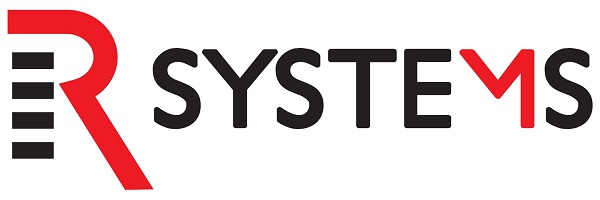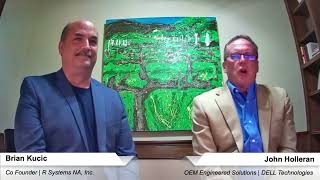 HPC-as-a-Service is one of the hot growth sectors of the high performance computing industry. R Systems is a significant player in this arena, providing HPC-on-demand resources and technical expertise to commercial and institutional research clients in partnership with Dell HPC Cloud Services.
HPC-as-a-Service is one of the hot growth sectors of the high performance computing industry. R Systems is a significant player in this arena, providing HPC-on-demand resources and technical expertise to commercial and institutional research clients in partnership with Dell HPC Cloud Services.
R Systems offers bare-metal clusters and a variety of solutions for client’s HPC needs, including lease time on clusters for bursting, no charges for data ingress and egress, and HPC support and expertise for short-term and long-term projects (more details can be found here).
In this interview conducted on behalf of Dell Technologies, we sat down with R System’s Founding Principal Brian Kucic and Dell’s John Holleran we discuss R System’s dedicated configurations to fit usage requirements, resources for simulation and machine and deep learning, multi-cloud and workflow orchestration tools, and VMware-based cloud infrastructure.
Doug Black: Today as part of our series of interviews on behalf of Dell Technologies we’re with Brian Kucik, he’s co-founder of R Systems, and John Holleran of OEM Engineered Solutions at Dell Technologies. Gentlemen, welcome.
Today we’re focused on HPC-on-demand. It’s a very hot growth area of HPC and it comes in many flavors. Some customers need burst capacity when their compute needs outstrip on-premises capacity, while others want someone else to handle their HPC infrastructure. So Brian, let’s start with you. Tell us about the partnership between R Systems and Dell Technologies. How far back does it go?
Brian Kucik: Sure. R Systems was spun out back in 2005 from the National Center for Supercomputing Applications based on a campus University of Illinois, Urbana Champaign, and we had a well-established relationship with NCSA. When we spun out the company that Greg Keller, my co founder, and I, that carried over to Dell. So we have been a partner since 2005 and we got on boarded at Dell since basically 2011 and relocated to Austin. We were the folks behind the Dell HPC cloud services solution at the time. And now we’ve moved in the OEM group as of 2020, and started up the new offerings that we’ll be talking about today.
Black: Okay, so, John, over to you. Tell us about the market you’re addressing and an overview of the solution you’re bringing to market?
John Holleran: Yes, absolutely. So if you think about high performance compute in the cloud, five or six years ago it wasn’t even a major revenue target. Today. It’s growing about 16.5 percent compound growth year over year and looking to be about an $8.8 billion target in 2024. So a lot of growth in that area, the key verticals, and that’s based on the life sciences, research, CAE and modeling-based solutions. If you think about the customers, they need excess capacity or different kinds of compute than what they have in their own infrastructure. They’re the ones that are going out and leveraging the hyperscalers in the cloud. And that’s the market that we’re absolutely going after for this opportunity.
As far as the solutions that we’re bringing to market, the first one is what we call our dedicated managed colocation service. That is a solution where we work directly with the customer’s needs and requirements, understand what hardware they want to leverage, and we acquire them on behalf of the customer. R Systems — Brian and his team — got it deployed into our colo infrastructure, and they manage that so they become an extension of that customer’s IT staff with skilled HPC AI experience answering all the questions, helping with tuning, support, and all the other things necessary to ensure that they’re meeting their needs and requirements of that solution.
The second solution that we focus on is what we call HPC-on-demand as a true cloud infrastructure based on VMware, so we’ve been working very closely with VMware opposite the CTO to build out an optimized VMware infrastructure. If you think of VMware, it’s the 10,000-pound gorilla. When you talk about the term cloud, and every hyperscaler has some version of virtualization layer that they leverage, we are probably the first one in the market that is based specifically off of VMware.
And what we’ve done is done some very customized tuning and optimization to ensure that — well, our whole goal was to be less than 10 percent less performant than bare metal, which is very good when you think about a VMware infrastructure. And we do that through limiting the number of VMs on nodes, and we’ve done a lot of tuning and customization within the stack to ensure that we provide a good interface.
Within that portfolio we’ve got some customers that just want raw compute And we give them access to a single tenant infrastructure, and they can go run their jobs whether using Slurm, Omnia, Bright, whatever technology they want to use, bring your own scripts. So just raw performance compute and the whole goal there is obviously price for performance. You’ve got to get those jobs done – get in, get out and make that happen. This offer is available to customers based on hourly, monthly or yearly subscription fees. So it works out, that ability to burst and do other things as well.
And then for customers that want more of a user interface, or have requirements for orchestration, or need a marketplace of optimized tools and capability, we bring a control plane to those customers that give us very robust capability around reporting at the user level, department level organization level, (we offer) functionality that they can report back into their organization, that allows the customer to have a single interface to their HPC, whether it’s on-prem or if it’s in a colo, or even in the cloud, it allows you to see all of that from a single location.
And then, again, (we offer) all the HPC and AI experience customization… this extension of the customer’s IT staff, we’ll do as much or as little as the customer needs. We base that off of what we’d call our customer statement of work. We tune in specifically to the needs and requirements of the customer.
Kucik: Excuse me, I’ll add a little bit to. We wrap around our superior user support, which is really attributed to our growth throughout the years, is the level of support that we can provide the client. It’s really what we’re known for in the market as well.
Black: Okay thanks. So, if I’m an organization’s HPC strategist, how would you compare Dells HPC-on-demand offering to the public cloud service providers? Why should I go with Dell?
Holleran: Sure. What we’ve heard from customers is they want price for performance, and that’s the number one thing we aligned this business to, having the best price per performance in the market.
Another real big pain point for customers is egress speeds. And we have designed this solution to be free of egress fees, ingress fees, all of that. So pricing is incredibly predictable and it’s known up front, and then the customer can expand or contract the solution based on their requirements as necessary. And then…(our) dedicated access to HPC and AI experienced staff is a big differentiator compared to the hyperscalers, who basically give you an interface and let you go run your jobs.
Black: Share with us some feedback from customers running in the environment today.
Kucic: We have different verticals…, and so far, the feedback has been very positive. Comments were made that this is performing better than their on-prem solution by up to 20 percent. And then we’ve had clients say they like the usability, it’s so easy to use, that we take care of all the network in the background and (the customer can) just pick and click on the compute, and for the novice user that helps out a lot. Again, I think a user will walk through the environment with a mixture that can launch a job, and that’s the spirit of user support that we offer. And we’re pretty proud of that.
Black: You mentioned you’re deploying these solutions in a colocation facility. Can you tell us a little more about that?
Holleran: We’ve partnered with the Switch data center company, they’ve got facilities in Las Vegas; Reno, Nevada; Grand Rapids, Michigan; Atlanta, Georgia. And then they just acquired a bunch of the land from the Dell campus in Round Rock, Texas, and they’re about to add five additional data center sites at that location.
Switch is a very interesting colocation facility. They have very robust technology as far as power management. They’re very green, so most of their facilities are 100 percent solar powered… The buildings’ physical security is bar none the best in the industry, you go through five guards before you actually make it into a cage in any of their facilities. So it’s incredibly secure from a physical security standpoint
Kucic: They’re networking offers a lot of options for the client. We feel we’re very competitive on the solution that we can provide at Switch. And we have a network of data center providers that will be expanded and this is where we started. We’re pretty proud of that.
Holleran: I’ll just add to that – that’s our North America footprint, we’re also looking at expansion into EMEA and Asia Pacific over time as well.
Black: Okay, many thanks to Brian Kusik of R Systems and John Holleran of Dell Technologies. Thanks so much.




